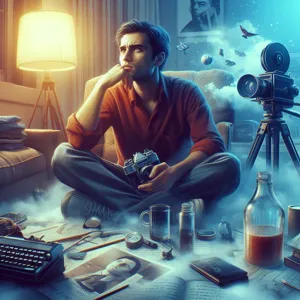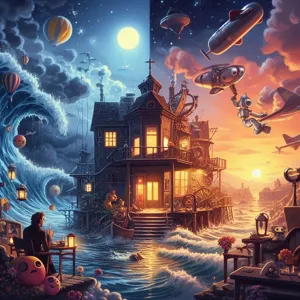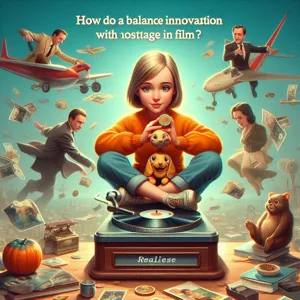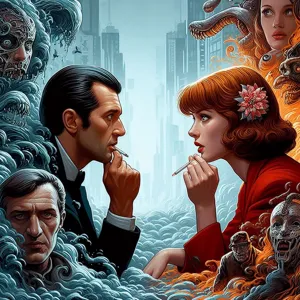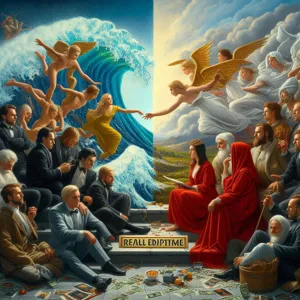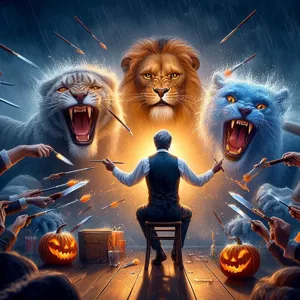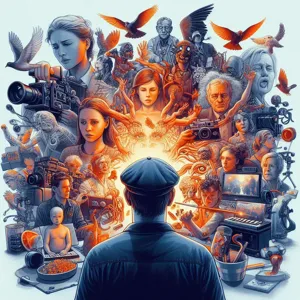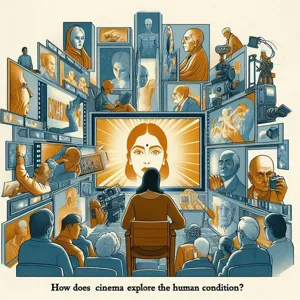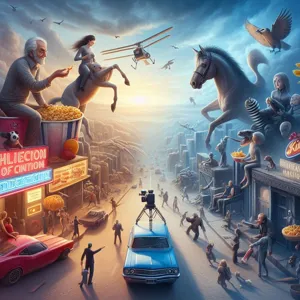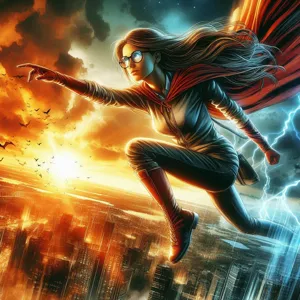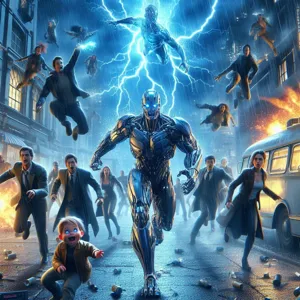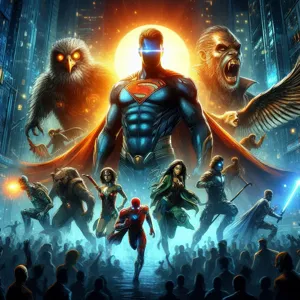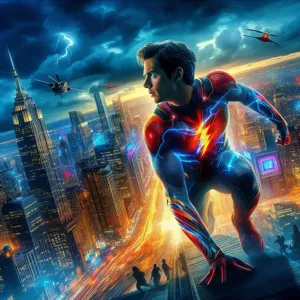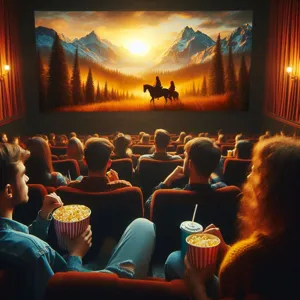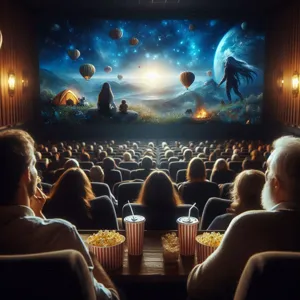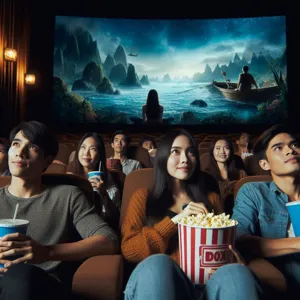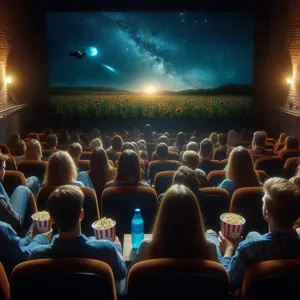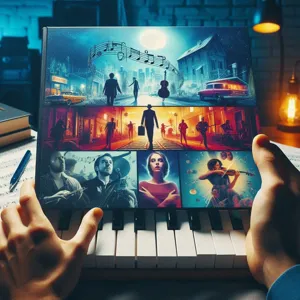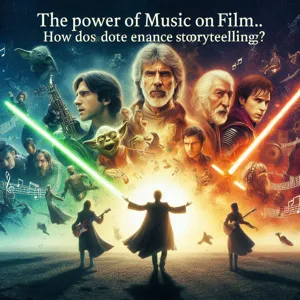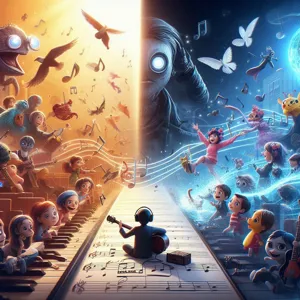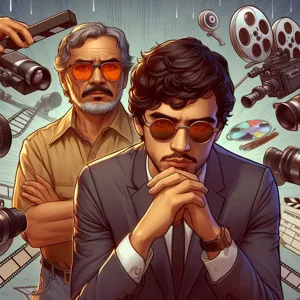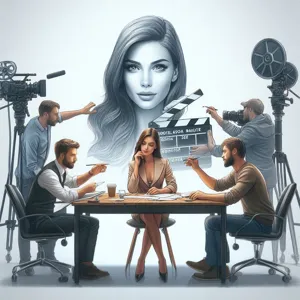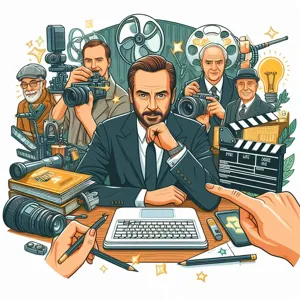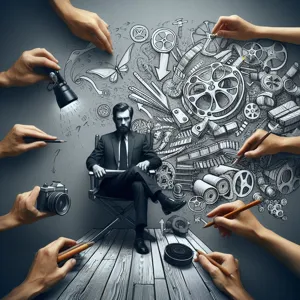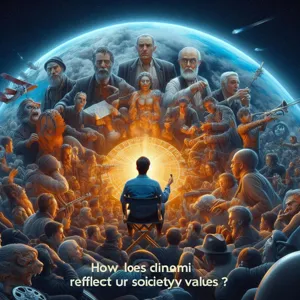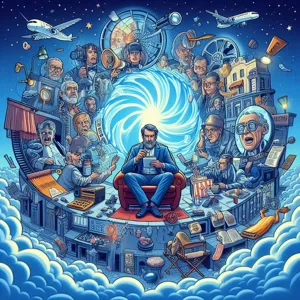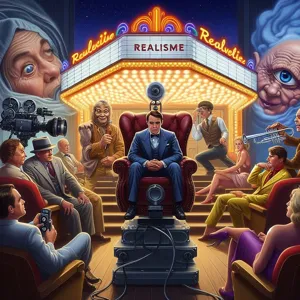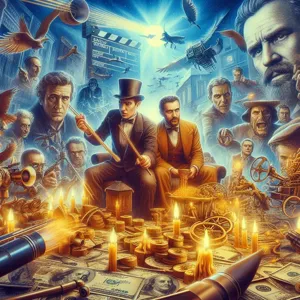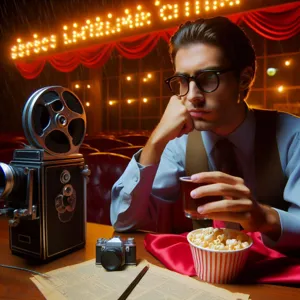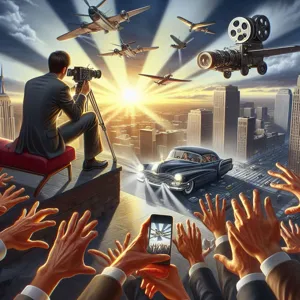In recent years, the cinematic landscape has been irrevocably transformed by the rise of expansive cinematic universes, captivating audiences and redefining storytelling in film.
From the Marvel Cinematic Universe to the DC Extended Universe, these interconnected narratives have not only brought beloved characters to life but have also generated unprecedented box office success and cultural relevance. However, this phenomenon raises critical questions: is the cinematic universe a blessing that fosters creativity and collaboration, or a burden that stifles originality and artistic expression? In this blog post, we delve deep into the intricacies of this modern filmmaking trend, exploring its impact on the industry, its influence on filmmakers and audiences alike, and whether it ultimately enhances or hinders the art of cinema. Join us as we navigate the thrilling yet complex world of cinematic universes, examining both the glittering successes and the potential pitfalls that come with this revolutionary approach to storytelling.
1. Introduction to the Cinematic Universe Concept
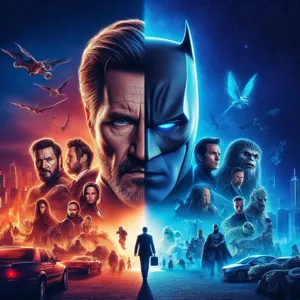
In the ever-evolving landscape of film, the concept of a cinematic universe has emerged as a transformative force, reshaping the way stories are told and experienced on the silver screen. At its core, a cinematic universe is an interconnected web of narratives that span multiple films, television series, and even digital content, all tied together by shared characters, themes, or mythologies. This ambitious storytelling approach allows filmmakers to create expansive worlds where characters can cross paths, storylines can intertwine, and audiences can immerse themselves in a rich, cohesive narrative experience.
The roots of the cinematic universe can be traced back to classic franchises, but it gained significant traction with the advent of the Marvel Cinematic Universe (MCU) in 2008. With its meticulous planning and execution, the MCU set a blueprint for cinematic storytelling that not only captivated audiences but also generated unprecedented box office success. Other studios quickly followed suit, launching their own interconnected franchises, from the DCEU (DC Extended Universe) to the MonsterVerse, each striving to replicate the magic that had captured the hearts of millions.
While the allure of cinematic universes lies in their potential for creativity and expansive storytelling, they also raise critical questions about the future of filmmaking. Does this model encourage artistic innovation, or does it stifle originality in favor of formulaic storytelling? Are filmmakers becoming mere architects of franchises, sacrificing individual narratives for the sake of a larger marketing strategy? As we delve deeper into this phenomenon, we’ll explore the dual-edged sword of cinematic universes, examining both their blessings and burdens for filmmakers and audiences alike.
2. The Rise of Cinematic Universes in Cinema
The rise of cinematic universes in cinema has transformed the landscape of storytelling, creating interconnected narratives that draw audiences back to theaters and streaming platforms in droves. This trend, pioneered by franchises like the Marvel Cinematic Universe (MCU), has not only redefined how films are produced and marketed but has also established a new framework for audience engagement.
At its core, a cinematic universe is a carefully crafted collection of films and television shows that share characters, themes, and storylines, allowing for a cohesive and expansive world-building experience. This approach invites viewers to immerse themselves in a rich tapestry of interconnected plots, where the choices and fates of individual characters ripple across multiple narratives. The MCU, for instance, has brilliantly woven together various superhero arcs over a decade, culminating in epic crossovers that leave fans eagerly anticipating the next installment.
However, the rise of cinematic universes extends beyond just superheroes. Other franchises, such as the “Harry Potter” series with its “Fantastic Beasts” spin-offs, and the “Star Wars” saga with its numerous films and series, have also embraced this model. This proliferation of interconnected stories has proven to be a lucrative strategy, as it encourages binge-watching, repeat viewings, and, ultimately, a loyal fanbase.
Yet, this phenomenon raises important questions about creativity and originality in filmmaking. As studios increasingly focus on building expansive universes, there is concern that unique, standalone films may be overshadowed or neglected. The pressure to connect every new release to a larger narrative can stifle artistic freedom, leading to formulaic storytelling driven more by commercial viability than by innovative ideas.
In this dynamic environment, filmmakers must navigate the delicate balance between crafting expansive universes that captivate audiences and maintaining the integrity of individual stories. As cinematic universes continue to dominate the film industry, it remains to be seen whether this trend will ultimately be a blessing that enriches the art of storytelling or a burden that stifles creative exploration.
3. Key Examples: Marvel, DC, and Beyond

When we discuss the cinematic universe phenomenon, it’s impossible to overlook the titans of the genre: Marvel and DC. These two franchises have not only defined the landscape of modern filmmaking but have also set the stage for countless imitators and spin-offs.
Marvel’s Cinematic Universe (MCU), launched with the release of “Iron Man” in 2008, revolutionized how stories are woven together across multiple films. With interconnected narratives, character crossovers, and an overarching plot that spans more than a decade, the MCU has captivated audiences globally. Each film, from “The Avengers” to “Black Panther,” doesn’t just stand alone; it enhances a larger, intricate tapestry filled with Easter eggs and callbacks that reward dedicated fans. Marvel has mastered the art of building anticipation, orchestrating massive events like “Infinity War” and “Endgame,” which serve as both climactic moments and celebratory milestones that create a sense of community among viewers.
On the other hand, DC has had a more tumultuous journey with its own cinematic universe, starting with “Man of Steel” in 2013. While films like “Wonder Woman” and “Aquaman” found commercial success and critical acclaim, the overall consistency of the DC Extended Universe (DCEU) has been questioned. The contrasting tones, varying directorial visions, and a struggle to find a cohesive identity have led to a mixed reception. However, recent efforts, including standalone hits like “Joker” and “The Batman,” showcase a willingness to explore different storytelling avenues, suggesting that perhaps the future of DC cinema lies in less interconnected, more character-driven narratives.
Beyond these giants, other franchises like the “MonsterVerse,” featuring films such as “Godzilla vs. Kong,” and the “Wizarding World” of Harry Potter have also attempted to capitalize on the interconnected storytelling model. These universes expand their lore, drawing in devoted fans while introducing new audiences to their worlds. However, as these cinematic universes proliferate, the question arises: does the pressure to connect each story stifle creativity and originality?
The successes and struggles of Marvel and DC highlight the dual-edged nature of the cinematic universe phenomenon. While they create opportunities for expansive storytelling and fan engagement, they also risk becoming a formulaic approach that may detract from the unique artistry of individual films. As we navigate this evolving landscape, the balance between interconnectedness and creative freedom remains a pivotal challenge for filmmakers and audiences alike.
4. The Benefits of a Cinematic Universe for Filmmakers
The rise of the cinematic universe has ushered in a revolutionary approach to storytelling in filmmaking, presenting a myriad of benefits for filmmakers that extend far beyond mere box office numbers. By creating interconnected narratives that span multiple films and even television series, filmmakers can delve deeper into character development, allowing audiences to form richer emotional connections with their favorite heroes and villains.
One of the most significant advantages of a cinematic universe is the opportunity for expansive world-building. Filmmakers can craft intricate universes filled with a diverse array of characters, settings, and story arcs. This not only enriches the viewing experience but also opens the door to endless creative possibilities. Filmmakers can introduce new characters, explore different timelines, and weave in subplots that may not have fit into a standalone film. As a result, audiences are treated to a more immersive experience, eagerly anticipating how each new installment will connect to the larger narrative tapestry.
Moreover, the financial backing that comes with a successful cinematic universe can be a game-changer for filmmakers. Studios are often more willing to invest in projects that promise to contribute to a larger franchise, enabling creators to produce higher-quality content with better resources. This financial support allows filmmakers to experiment with innovative techniques, pursue ambitious visual effects, and attract top-tier talent, both in front of and behind the camera.
Another noteworthy benefit is the built-in audience that a cinematic universe cultivates. Established franchises often come with a loyal fanbase eager for more content, which increases the chances of box office success right from the start. Filmmakers can leverage this pre-existing interest to explore more niche storylines that might not otherwise find a place in traditional stand-alone films.
Lastly, the collaborative nature of cinematic universes can foster creativity and innovation. Filmmakers, writers, and producers have the opportunity to work together, sharing ideas and feedback across various projects. This collaborative spirit can lead to unique storytelling methods and fresh perspectives, ultimately enhancing the quality of the films produced.
In summary, the benefits of a cinematic universe for filmmakers are vast and varied. By providing avenues for deep character exploration, expansive world-building, financial support, an established audience, and collaborative opportunities, cinematic universes represent a thrilling frontier in contemporary filmmaking, inviting creators to push the boundaries of their art and engage audiences like never before.
5. Audience Engagement: Building a Loyal Fanbase
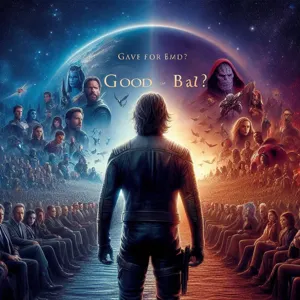
In the age of sprawling cinematic universes, building a loyal fanbase has become more crucial than ever for filmmakers. A dedicated audience does more than just purchase tickets; they amplify word-of-mouth marketing, engage with content across various platforms, and participate in discussions that keep the momentum of a franchise alive. But how does one cultivate this elusive loyalty amidst the noise of a saturated market?
First and foremost, filmmakers must prioritize authentic storytelling. Audiences crave characters they can relate to and narratives that resonate on a personal level. When viewers see themselves reflected in the struggles and triumphs of the characters, they feel a connection that extends beyond the screen. For example, the Marvel Cinematic Universe has excelled in creating relatable heroes facing real-world dilemmas, which has resulted in a devoted following that eagerly anticipates each new installment.
Moreover, fostering community engagement is essential. Social media platforms are invaluable tools for filmmakers to interact directly with their fans. By sharing behind-the-scenes content, hosting Q&A sessions, and encouraging fan art and theories, creators can cultivate a sense of belonging. Initiatives like fan events, watch parties, and interactive experiences can further deepen this connection, transforming casual viewers into passionate advocates for the brand.
Additionally, leveraging fan feedback can be a double-edged sword. While engaging with audience opinions can enhance future projects and build goodwill, it can also risk alienating segments of the fanbase if not handled delicately. Filmmakers must strike a balance between listening to their audience and remaining true to their creative vision. After all, the most successful films often come from a place of authenticity rather than a mere attempt to appease fans.
Ultimately, in the realm of cinematic universes, the strength of audience engagement lies in the ability to create lasting connections. By prioritizing storytelling, community involvement, and thoughtful audience interaction, filmmakers can build a loyal fanbase that not only supports their projects but also champions them for years to come. In a market where franchises often dominate, the ones that invest in their audiences will reap the rewards, turning casual viewers into lifelong fans.
6. The Challenges of Creating a Cohesive Narrative
Creating a cohesive narrative within the sprawling framework of a cinematic universe presents filmmakers with a unique set of challenges. Unlike standalone films, where a singular vision can drive the story from beginning to end, a cinematic universe requires collaborators to weave together multiple storylines, characters, and timelines into a harmonious whole. This task can be akin to assembling a complex puzzle, where each piece must not only fit perfectly but also contribute meaningfully to the larger picture.
One of the primary hurdles is ensuring consistency across films. With various directors, writers, and production teams involved, maintaining a unified tone and style can prove difficult. For example, introducing a new character in one film can lead to discrepancies in their portrayal if different teams interpret their motivations and backstory in conflicting ways. Audiences, increasingly savvy in their consumption of interconnected narratives, quickly pick up on these inconsistencies, which can detract from their overall enjoyment and immersion.
Moreover, the weight of expectations adds another layer of complexity. Filmmakers must balance the desire to innovate and explore new creative territories with the need to honor established lore and character arcs. This balancing act can stifle originality, as creators may feel pressured to play it safe, leading to formulaic storytelling rather than bold, daring narratives that push the boundaries of cinematic artistry.
Additionally, pacing becomes a crucial consideration in a cinematic universe. With multiple plotlines and character arcs to juggle, filmmakers may find themselves struggling to deliver a satisfying narrative that feels both complete and engaging. The risk of overstuffing a film with subplots can leave audiences feeling overwhelmed or underwhelmed, as key story elements may be rushed or inadequately developed.
In essence, while the allure of a cinematic universe offers remarkable opportunities for storytelling, it also imposes significant challenges. Filmmakers must navigate these complexities with skill and creativity, striving to create an interconnected tapestry that resonates with audiences while maintaining the integrity of each individual story. The success of this endeavor ultimately hinges on their ability to harmonize the diverse elements at play, ensuring that every film within the universe stands strong on its own while contributing to a greater narrative.
7. Financial Implications: Box Office Success vs. Creative Freedom
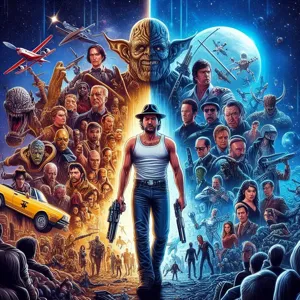
The financial implications of the cinematic universe phenomenon present a double-edged sword for filmmakers, balancing the allure of box office success with the constraints on creative freedom. On one hand, the massive investments that come with building interconnected franchises can lead to unprecedented financial rewards. Blockbusters like the Marvel Cinematic Universe have shattered box office records, generating billions in revenue and solidifying their place in pop culture. These profits not only ensure the continuation of the franchises but also provide studios with the resources to take on new projects and explore innovative storytelling techniques.
However, this financial success often comes at a cost. The pressure to produce consistently high-grossing films can stifle creativity, as studios prioritize formulas that guarantee returns over groundbreaking narratives. Filmmakers may find themselves navigating a maze of corporate expectations, focusing on marketability and fan service rather than artistic expression. The result can be a homogenization of content, where originality is sacrificed for the sake of franchise stability, leaving unique voices and stories on the sidelines.
Moreover, the obligation to cater to a larger audience can lead to decisions that dilute the essence of a film. Directors and writers may be forced to conform to established tropes and character arcs, limiting their ability to experiment and push boundaries. While the financial backing provided by successful cinematic universes can empower filmmakers, it can also create an environment where true creativity is compromised in favor of box office viability.
Ultimately, the financial implications of cinematic universes illustrate the intricate dance between profitability and artistic integrity. As audiences continue to flock to these blockbuster events, the challenge remains: how can filmmakers navigate the demands of financial success while still delivering captivating and authentic stories that resonate on a deeper level? The answer may shape the future of filmmaking in a world increasingly dominated by interconnected narratives.
8. The Impact on Independent Filmmaking
The rise of cinematic universes has undoubtedly reshaped the landscape of filmmaking, but the impact on independent filmmakers is a double-edged sword. On one hand, the success of large studios has resulted in an influx of investment and interest in the film industry as a whole. Independent filmmakers may find new opportunities for collaboration or distribution as mainstream audiences become more engaged with storytelling in cinematic formats. Festivals are now buzzing with discussions on how to create interconnected narratives, and some indie filmmakers are even experimenting with their own shared universes, hoping to capture a slice of the pie.
However, the dominance of big-budget franchises has also created a challenging environment for indie films, which often rely on originality and unique storytelling to stand out. As studios pour resources into marketing their expansive worlds filled with superheroes and intergalactic travel, smaller films struggle to gain visibility in a crowded marketplace. The focus on franchise potential can lead to a homogenization of content, with studios favoring formulaic scripts over the innovative narratives that define independent cinema.
Moreover, the pressure to conform to the expectations set by successful cinematic universes can stifle creativity among independent filmmakers. Many may feel compelled to incorporate familiar tropes or themes to attract funding or distribution, potentially sacrificing their artistic vision in the process. This tension creates a complicated relationship between indie creators and the sprawling cinematic landscapes crafted by major studios.
Ultimately, while cinematic universes have opened doors for some, they have also cast long shadows over the independent filmmaking community. The challenge lies in finding a balance, allowing both grand narratives and intimate, personal stories to coexist and flourish in the ever-evolving theater of film. As audiences crave diversity in their viewing experiences, the future of independent filmmaking may depend on its ability to carve out unique spaces within this expansive universe.
9. Viewer Fatigue: Are Audiences Overwhelmed?
In the wake of the rapid expansion of cinematic universes, a palpable sense of viewer fatigue has begun to settle among audiences. With so many interconnected films and sprawling narratives demanding attention, many moviegoers are finding themselves overwhelmed by the sheer volume of content. Gone are the days when a single blockbuster could dominate the cultural conversation for months; now, it seems every week brings a new release that is part of a larger franchise, complete with intricate backstories and character arcs that span multiple films.
This relentless pace can lead to a daunting challenge: how do viewers keep up? The pressure to watch every installment in order to fully appreciate the overarching storyline can feel like a chore rather than an enjoyable pastime. As audiences grapple with an ever-growing list of must-see films, the excitement that once accompanied the debut of a new release can quickly give way to anxiety. Are they missing out on critical plot points? Are they expected to remember every detail from previous films?
Moreover, the saturation of content can dilute the impact of individual stories. When every film is part of a larger tapestry, the unique voice of a director or the nuance of a standalone story can be overshadowed by the weight of expectations to connect to the broader narrative. Viewers might find themselves questioning whether they are truly invested in the characters or merely following along out of obligation.
As the cinematic universe phenomenon continues to evolve, filmmakers and studios must consider whether they are inadvertently pushing audiences away with the sheer volume of content. Striking a balance between expanding a beloved universe and maintaining viewer engagement is crucial. As we navigate this landscape, it begs the question: Are we witnessing the birth of a new era in filmmaking, or are we on the brink of a collective sigh as audiences step back from the onslaught of interconnected stories? Only time will tell if this trend is a blessing that enriches the cinematic experience or a burden that exhausts the very viewers it aims to captivate.
10. Balancing Franchise Expectations with Originality
In the sprawling landscape of the cinematic universe phenomenon, filmmakers find themselves at a crossroads where franchise expectations and originality must coexist. This balancing act is no small feat, as the pressure to deliver a blockbuster success often overshadows the creative impulses that drive true artistry. On one hand, studios demand consistency and familiarity, leaning heavily on beloved characters and established storylines to secure box office success. On the other hand, audiences are increasingly yearning for fresh narratives and innovative storytelling that challenge the status quo.
Filmmakers must navigate this complex terrain with both skill and strategy. Crafting a film that honors its franchise heritage while introducing novel concepts is essential. This might mean reimagining character arcs, experimenting with genre mash-ups, or incorporating diverse perspectives that enrich the narrative. For instance, a well-received sequel may find its strength in exploring the deeper emotional journeys of its characters, rather than merely relying on action-packed spectacles.
Moreover, the advent of streaming platforms has further complicated this dynamic. With an ever-growing array of content vying for attention, filmmakers are incentivized to push creative boundaries while still adhering to franchise lore. The challenge lies in creating a film that feels both like a natural extension of the universe and a standalone story that can captivate both loyal fans and new audiences alike.
Ultimately, the key to success is finding that sweet spot where commercial viability meets artistic integrity. When filmmakers embrace their unique visions within the framework of a franchise, they can create compelling experiences that resonate on multiple levels. This delicate balance not only enhances the cinematic universe but also ensures that originality thrives in an industry often dominated by formulas and expectations. In this way, the cinematic universe can become more than just a series of interconnected films; it can evolve into a rich tapestry of storytelling that honors both its roots and the creative spirit of its filmmakers.
11. Case Studies: Successful and Failed Cinematic Universes
In the ever-evolving landscape of filmmaking, the emergence of cinematic universes has sparked both excitement and skepticism among audiences and industry professionals alike. To truly understand the impact of this phenomenon, it’s essential to examine both the shining successes and the notable failures that have marked this trend.
**Successful Cinematic Universes: Marvel’s Dominance**
At the forefront of successful cinematic universes is, without a doubt, the Marvel Cinematic Universe (MCU). Launched with “Iron Man” in 2008, the MCU has since expanded into a vast tapestry of interconnected stories, beloved characters, and blockbuster films that have grossed billions worldwide. Its success can be attributed to meticulous planning, engaging storytelling, and the ability to balance individual character arcs with overarching narratives. Each film feels like a piece of a larger puzzle, encouraging viewers to invest not just in a single movie but in an entire universe. The strategic release of films and the integration of various characters have fostered a loyal fan base, making the MCU a shining example of how cinematic universes can thrive.
**Failed Cinematic Universes: The Dark Universe’s Missteps**
In stark contrast, the ambitious launch of Universal’s Dark Universe is a cautionary tale for filmmakers. Intended to revitalize classic monster films like “The Mummy” (2017) with a shared universe concept, the Dark Universe stumbled out of the gate. Despite star power in its cast, the film received lukewarm reviews and failed to connect with audiences, leading to the cancellation of subsequent projects. The rushed execution, lack of a coherent vision, and insufficient world-building showcased the pitfalls of attempting to replicate the MCU formula without a solid foundation. This failure serves as a reminder that the allure of a cinematic universe requires more than just a collection of popular characters; it demands a well-thought-out narrative strategy and genuine audience engagement.
**Conclusion: Lessons Learned**
These case studies illustrate the delicate balance filmmakers must strike when building a cinematic universe. Success hinges on a deep understanding of character development, narrative cohesiveness, and audience connection. While the MCU continues to dominate and inspire, the failure of the Dark Universe serves as a stark reminder that enthusiasm alone cannot sustain a cinematic universe. As the industry moves forward, these lessons will undoubtedly shape the future of interconnected storytelling in film, providing both a roadmap for success and a warning against overreach.
12. The Future of Cinematic Universes in Film
As we look to the horizon of filmmaking, the future of cinematic universes seems both promising and precarious. On one hand, the success of established franchises like the Marvel Cinematic Universe and the Star Wars saga has paved the way for an explosion of interconnected storytelling, captivating audiences with intricate narratives that span multiple films and series. This trend has encouraged studios to invest heavily in expansive world-building, creating rich landscapes filled with beloved characters and engaging plotlines. Audiences today crave the thrill of continuity, the excitement of seeing their favorite heroes or villains interact in unexpected ways, and the satisfaction of piecing together a larger narrative puzzle.
However, the burden of this phenomenon cannot be overlooked. As more studios rush to create their own cinematic universes, the risk of oversaturation looms large. Audiences may grow weary of repetitive formulas and lackluster storytelling, leading to franchise fatigue. We’ve already seen this with some recent attempts that fell flat, struggling to capture the magic of their predecessors. Furthermore, the emphasis on interconnectedness can stifle creativity, with filmmakers sometimes prioritizing franchise cohesion over original storytelling.
Looking ahead, the future of cinematic universes in film will likely hinge on finding the right balance. Successful franchises will need to evolve, embracing fresh narratives and innovative approaches while maintaining the allure of their interconnected worlds. Filmmakers must be willing to experiment, to take risks that may not always align with the established formula, allowing for new voices and stories to emerge. As audiences become more discerning, the challenge will be to create universes that not only entertain but also resonate on deeper emotional levels.
Ultimately, the future of cinematic universes will depend on how well filmmakers and studios can navigate the delicate interplay between ambition and authenticity, crafting experiences that feel both expansive and intimate, familiar yet groundbreaking. Whether this trend becomes a blessing or a burden will depend on their ability to keep the magic alive amidst the ever-expanding tapestry of cinematic storytelling.
13. Conclusion: Blessing or Burden? A Balanced Perspective
As we draw the curtain on our exploration of the cinematic universe phenomenon, it’s clear that this trend is both a blessing and a burden for the filmmaking industry. On one hand, the interconnected storytelling and expansive world-building have revolutionized how audiences engage with narratives, fostering a deeper emotional investment in characters and plots that stretch across multiple films and franchises. This has given rise to a new generation of storytellers who embrace the complexity of weaving intricate tales that captivate viewers over extended timelines, creating a sense of community among fans who eagerly anticipate each installment.
However, the weight of this trend cannot be overlooked. The pressure to conform to the expectations of a franchise often stifles creativity, leading filmmakers to prioritize box office performance over innovative storytelling. The risk of oversaturation looms large, as audiences may grow weary of the relentless stream of sequels and spin-offs that flood the market, potentially diluting the impact of original content. Moreover, the emphasis on interconnected narratives can alienate viewers who may feel lost or overwhelmed by the sheer volume of material required to fully appreciate a cinematic universe.
In conclusion, the cinematic universe phenomenon presents a dual-edged sword for filmmakers. It offers unprecedented opportunities for storytelling and audience engagement, yet it also imposes significant constraints that challenge the very essence of artistic expression. As the industry continues to evolve, it is crucial for creators to strike a delicate balance—embracing the advantages of interconnected storytelling while ensuring that originality and genuine narrative craft remain at the forefront of their work. Only then can we truly appreciate the magic of cinema in all its multifaceted glory.
14. Final Thoughts: What Can Filmmakers Learn?
As we draw the curtain on our exploration of the cinematic universe phenomenon, it’s essential to reflect on the lessons filmmakers can glean from this transformative landscape. The rise of interconnected storytelling has reshaped the way films are crafted, marketed, and consumed, presenting both remarkable opportunities and significant challenges.
First and foremost, filmmakers should embrace the power of character development and world-building. The cinematic universe thrives on intricate narratives that span multiple films and series, allowing audiences to invest emotionally in characters over time. This long-term engagement is something standalone films often struggle to achieve. By creating rich backstories and nuanced relationships, filmmakers can foster a devoted following that eagerly anticipates future installments.
Moreover, collaboration has become a cornerstone of successful cinematic universes. Filmmakers should consider the benefits of working within a shared framework, where ideas can be exchanged and expanded upon. This collaboration not only enhances creativity but also paves the way for diverse storytelling that resonates with a broader audience. By pooling resources and talent, filmmakers can elevate their projects in ways that may be unattainable in isolation.
However, the burden of high expectations and franchise fatigue cannot be overlooked. Filmmakers must strike a delicate balance between catering to established fanbases and finding their unique voice within the larger narrative. Originality should not be sacrificed at the altar of box office success; rather, it should be celebrated as a vital component of any cinematic endeavor. Innovating within the confines of a shared universe can lead to fresh perspectives and unexpected plot twists that keep audiences engaged.
In conclusion, the cinematic universe phenomenon is not simply a trend but a paradigm shift in the filmmaking industry. By embracing character depth, fostering collaboration, and prioritizing originality, filmmakers can harness the strengths of this new landscape while navigating its complexities. The journey ahead is undoubtedly challenging, but for those willing to adapt, the rewards of creating captivating stories that resonate with audiences across the globe are boundless.
In conclusion, the cinematic universe phenomenon has undeniably transformed the landscape of filmmaking, presenting both exciting opportunities and significant challenges. As studios embrace the potential for expansive storytelling and interconnected narratives, filmmakers are tasked with balancing creativity and commercial viability. While this trend has birthed iconic characters and beloved franchises, it has also raised questions about originality and artistic expression in a space increasingly dominated by shared universes. As audiences continue to engage with these sprawling narratives, it’s essential for creators to find innovative ways to breathe life into their stories while navigating the expectations set by the cinematic universe model. Whether viewed as a blessing or a burden, one thing is certain: the evolution of filmmaking is an ongoing journey, and we can’t wait to see how it unfolds in the future.

